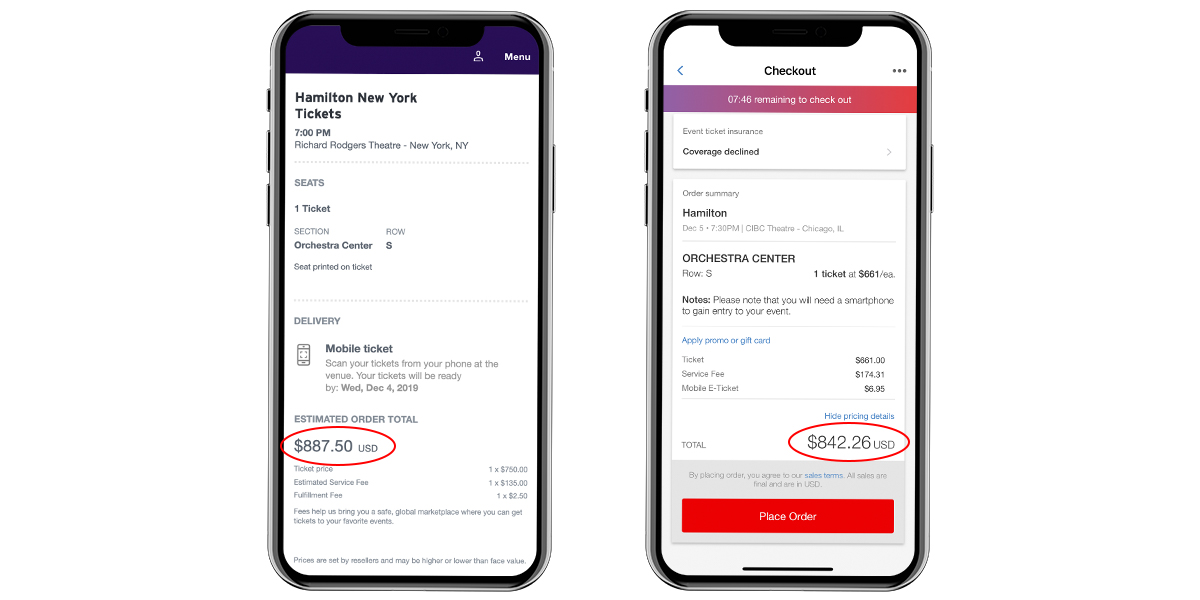

Finance
What Is IT Portfolio Management?
Published: January 22, 2024
Learn how IT portfolio management in finance can help optimize technology investments and align IT initiatives with business objectives.
(Many of the links in this article redirect to a specific reviewed product. Your purchase of these products through affiliate links helps to generate commission for LiveWell, at no extra cost. Learn more)
Table of Contents
Introduction
Introduction
Welcome to the dynamic world of IT portfolio management! In today’s fast-paced digital landscape, businesses rely heavily on technology to drive innovation, streamline operations, and gain a competitive edge. As a result, the management of IT assets and resources has become increasingly complex, necessitating a strategic approach to optimize investments and align IT initiatives with overarching business goals.
Effective IT portfolio management entails the systematic organization, prioritization, and governance of an organization's IT assets and resources. This proactive discipline empowers businesses to make informed decisions regarding their IT investments, ensuring that resources are allocated efficiently and projects are aligned with the organization's strategic objectives.
In the following sections, we will delve into the intricacies of IT portfolio management, exploring its definition, importance, key components, benefits, challenges, and best practices. By gaining a comprehensive understanding of IT portfolio management, you will be better equipped to harness the power of technology to drive business growth and innovation. Let's embark on this enlightening journey into the realm of IT portfolio management!
Definition of IT Portfolio Management
Definition of IT Portfolio Management
IT portfolio management encompasses the strategic planning, governance, and optimization of an organization’s IT assets, resources, and investments. It involves the systematic evaluation and prioritization of IT initiatives, projects, and assets to align them with the organization’s business objectives and maximize overall value.
At its core, IT portfolio management serves as a comprehensive framework for overseeing and managing an organization’s entire suite of IT assets and initiatives, including hardware, software, applications, infrastructure, and digital resources. This strategic discipline enables businesses to make well-informed decisions regarding their IT investments, ensuring that resources are allocated judiciously and that IT projects are aligned with the organization’s overarching goals.
By leveraging IT portfolio management, organizations can gain valuable insights into their IT landscape, enabling them to identify redundancies, optimize resource allocation, mitigate risks, and seize opportunities for innovation. This proactive approach empowers businesses to enhance operational efficiency, drive digital transformation, and achieve a sustainable competitive advantage in today’s technology-driven marketplace.
Furthermore, IT portfolio management provides a structured methodology for evaluating the performance and value delivery of IT assets and initiatives, facilitating continuous improvement and informed decision-making. It enables organizations to assess the health and viability of their IT portfolio, identify areas for optimization, and realign IT investments to support evolving business needs and market dynamics.
Ultimately, the overarching goal of IT portfolio management is to enable organizations to leverage their IT assets and resources as strategic enablers, driving business growth, agility, and innovation while mitigating risks and optimizing costs.
Importance of IT Portfolio Management
Importance of IT Portfolio Management
IT portfolio management plays a pivotal role in empowering organizations to effectively govern, optimize, and align their IT investments with strategic business objectives. The importance of IT portfolio management can be underscored by its multifaceted impact on organizational performance, innovation, and competitive positioning.
Strategic Alignment: By embracing IT portfolio management, organizations can ensure that their IT initiatives and investments are closely aligned with the overarching business strategy. This alignment enables businesses to prioritize IT projects that directly contribute to achieving business objectives, fostering a cohesive and synergistic relationship between technology and business outcomes.
Resource Optimization: IT portfolio management enables organizations to optimize the allocation of IT resources, including budget, talent, and infrastructure. Through rigorous evaluation and prioritization, businesses can allocate resources judiciously, eliminating redundancies, and maximizing the value derived from IT investments.
Risk Mitigation: Effective IT portfolio management empowers organizations to identify and mitigate potential risks associated with IT initiatives. By conducting comprehensive assessments and scenario analyses, businesses can proactively address risks, ensuring the resilience and stability of their IT portfolio in the face of evolving technological and market dynamics.
Innovation Enablement: IT portfolio management fosters an environment conducive to innovation by enabling organizations to allocate resources strategically towards transformative IT initiatives. By identifying opportunities for technological innovation and aligning them with business goals, businesses can drive continuous improvement and stay ahead in an increasingly competitive and disruptive business landscape.
Performance Evaluation: Through IT portfolio management, organizations can systematically evaluate the performance and value delivery of their IT assets and initiatives. This enables businesses to make data-driven decisions, optimize underperforming IT investments, and reallocate resources to initiatives that yield the highest value and impact.
Overall, the importance of IT portfolio management lies in its ability to empower organizations to harness the full potential of their IT assets, drive innovation, mitigate risks, and align technology investments with strategic business imperatives, thereby fostering sustained growth, agility, and competitive advantage.
Key Components of IT Portfolio Management
Key Components of IT Portfolio Management
IT portfolio management comprises several key components that collectively form a comprehensive framework for governing, optimizing, and aligning an organization’s IT assets and initiatives with its strategic objectives. These components encompass various aspects of IT governance, resource allocation, risk management, and value optimization, enabling organizations to make informed decisions and drive business growth through technology.
- Portfolio Governance: Effective IT portfolio management necessitates robust governance mechanisms to oversee and guide the strategic direction of IT investments. This involves establishing clear accountability, decision-making frameworks, and compliance measures to ensure that IT initiatives align with business objectives and regulatory requirements.
- Strategic Alignment: Aligning IT initiatives with business strategy is a fundamental component of IT portfolio management. This entails evaluating the relevance of IT projects in relation to overarching business goals, prioritizing initiatives that contribute to strategic objectives, and realigning the IT portfolio as business priorities evolve.
- Resource Optimization: Optimizing IT resources involves evaluating and prioritizing IT investments, talent, infrastructure, and budget allocations to maximize value delivery and mitigate inefficiencies. This component aims to ensure that resources are allocated judiciously to initiatives that yield the highest impact and support business objectives.
- Risk Management: Proactively identifying, assessing, and mitigating risks associated with IT initiatives is a critical component of IT portfolio management. This involves conducting risk assessments, scenario analyses, and implementing risk mitigation strategies to enhance the resilience and stability of the IT portfolio amidst evolving technological and market dynamics.
- Performance Evaluation: Continuous evaluation of the performance and value delivery of IT assets and initiatives is essential for informed decision-making. This component encompasses the measurement of key performance indicators, benchmarking against predefined targets, and optimizing underperforming IT investments to maximize overall portfolio value.
- Decision Support and Reporting: Providing decision-makers with actionable insights and comprehensive reports is integral to IT portfolio management. This component involves leveraging data analytics, performance metrics, and scenario modeling to support informed decision-making and facilitate transparent communication regarding the health and trajectory of the IT portfolio.
By integrating these key components, organizations can establish a robust IT portfolio management framework that empowers them to govern, optimize, and align their IT assets and initiatives with strategic business imperatives, driving sustained growth, innovation, and competitive advantage.
Benefits of IT Portfolio Management
Benefits of IT Portfolio Management
Implementing a robust IT portfolio management framework yields a diverse array of benefits that significantly impact an organization’s operational efficiency, strategic decision-making, and overall business performance. These benefits encompass both tangible and intangible advantages, contributing to sustained growth, innovation, and competitive positioning in today’s technology-driven landscape.
- Optimized Resource Allocation: IT portfolio management enables organizations to allocate IT resources judiciously, optimizing budget, talent, and infrastructure to maximize value delivery and support strategic business objectives.
- Strategic Alignment: By aligning IT initiatives with business strategy, organizations can prioritize projects that directly contribute to achieving business objectives, fostering a cohesive relationship between technology and business outcomes.
- Risk Mitigation: Proactively identifying and mitigating risks associated with IT initiatives enhances the resilience and stability of the IT portfolio amidst evolving technological and market dynamics.
- Enhanced Decision-Making: IT portfolio management provides decision-makers with actionable insights and comprehensive reports, facilitating informed decision-making and transparent communication regarding the health and trajectory of the IT portfolio.
- Performance Optimization: Continuous evaluation of the performance and value delivery of IT assets and initiatives enables organizations to optimize underperforming IT investments and reallocate resources to initiatives that yield the highest impact.
- Cost Savings: By eliminating redundancies and inefficiencies in IT resource allocation, organizations can realize cost savings and optimize their IT expenditure, driving overall operational efficiency.
- Innovation Enablement: IT portfolio management fosters an environment conducive to innovation by strategically allocating resources towards transformative IT initiatives that drive continuous improvement and competitive advantage.
- Competitive Advantage: Leveraging IT portfolio management empowers organizations to gain a sustainable competitive advantage by aligning technology investments with strategic business imperatives and fostering agility and innovation.
Collectively, these benefits underscore the transformative impact of IT portfolio management, positioning organizations to leverage their IT assets as strategic enablers, drive innovation, and achieve sustained growth in today’s dynamic and technology-centric business landscape.
Challenges of IT Portfolio Management
Challenges of IT Portfolio Management
While the adoption of IT portfolio management offers a multitude of benefits, organizations also encounter several challenges in effectively implementing and maintaining a robust IT portfolio management framework. These challenges stem from the complexities inherent in managing diverse IT assets, navigating technological advancements, and aligning IT initiatives with evolving business needs.
- Complexity of IT Ecosystem: Organizations often grapple with the complexity of managing a diverse IT ecosystem comprising hardware, software, applications, infrastructure, and digital resources. This complexity can pose challenges in evaluating and prioritizing IT assets and initiatives within the portfolio.
- Technological Obsolescence: Rapid technological advancements and the risk of obsolescence present a significant challenge in managing IT portfolios. Organizations must navigate the evolving technological landscape to ensure that their IT investments remain relevant and aligned with business objectives.
- Resource Constraints: Limited IT resources, including budgetary constraints and talent shortages, can impede the effective management of IT portfolios, leading to challenges in optimizing resource allocation and supporting strategic initiatives.
- Change Management: Implementing IT portfolio management often requires a cultural shift and change management efforts within the organization. Resistance to change and the need to realign existing processes and practices can pose challenges during the adoption and integration of IT portfolio management.
- Data Management and Integration: Managing and integrating diverse data sources and repositories to gain comprehensive insights into the IT portfolio’s performance and value delivery can be a complex undertaking, requiring robust data management and integration capabilities.
- Governance and Compliance: Establishing robust governance mechanisms and ensuring compliance with regulatory requirements present challenges in governing and managing IT portfolios effectively, particularly in highly regulated industries.
- Business-IT Alignment: Achieving seamless alignment between IT initiatives and evolving business needs and priorities can be challenging, requiring ongoing communication and collaboration between IT and business stakeholders.
Addressing these challenges demands a proactive and adaptive approach, leveraging technology, organizational change, and strategic alignment to overcome barriers and harness the full potential of IT portfolio management in driving business growth and innovation.
Best Practices for IT Portfolio Management
Best Practices for IT Portfolio Management
Implementing best practices for IT portfolio management is essential for organizations to effectively govern, optimize, and align their IT assets and initiatives with strategic business objectives. By adhering to proven methodologies and strategies, organizations can maximize the value derived from their IT investments, foster innovation, and mitigate risks in a rapidly evolving technological landscape.
- Strategic Alignment: Align IT initiatives with business strategy, ensuring that IT investments directly contribute to achieving overarching business objectives and priorities.
- Robust Governance: Establish clear governance mechanisms to guide decision-making, ensure accountability, and enforce compliance with regulatory requirements and organizational policies.
- Comprehensive Evaluation: Conduct thorough evaluations of IT assets and initiatives, considering factors such as alignment with business goals, performance, risk, and resource requirements.
- Risk Management: Proactively identify and mitigate risks associated with IT initiatives, employing scenario analyses and risk mitigation strategies to enhance the resilience of the IT portfolio.
- Resource Optimization: Optimize the allocation of IT resources, including budget, talent, and infrastructure, to maximize value delivery and support strategic business imperatives.
- Performance Measurement: Continuously measure and evaluate the performance and value delivery of IT assets and initiatives, leveraging key performance indicators and benchmarks to drive informed decision-making.
- Transparency and Communication: Foster transparent communication and collaboration between IT and business stakeholders, ensuring alignment and shared understanding of IT portfolio objectives and outcomes.
- Adaptive Planning: Embrace adaptive planning methodologies to respond to changing business needs and market dynamics, realigning the IT portfolio to support evolving strategic imperatives.
- Data-Driven Insights: Leverage data analytics and reporting to gain actionable insights into the health and trajectory of the IT portfolio, supporting informed decision-making and performance optimization.
- Continuous Improvement: Foster a culture of continuous improvement, embracing feedback loops and iterative approaches to enhance the effectiveness of IT portfolio management practices.
By integrating these best practices into their IT portfolio management framework, organizations can navigate the complexities of IT governance, resource optimization, and risk management, positioning themselves to leverage technology as a strategic enabler for sustained growth, innovation, and competitive advantage.
Conclusion
Conclusion
IT portfolio management stands as a cornerstone of strategic IT governance, empowering organizations to navigate the complexities of the digital landscape, optimize resource allocation, and drive innovation in alignment with overarching business objectives. By systematically evaluating, prioritizing, and governing IT assets and initiatives, organizations can unlock transformative benefits while mitigating the challenges inherent in managing diverse IT portfolios.
As technology continues to evolve at a rapid pace, the strategic alignment of IT initiatives with business imperatives becomes increasingly critical. IT portfolio management serves as a guiding compass, enabling organizations to make informed decisions, optimize resource allocation, and foster a culture of innovation. Through robust governance, comprehensive evaluation, and proactive risk management, organizations can position themselves to thrive in a dynamic and competitive business environment.
Furthermore, the integration of best practices, including strategic alignment, robust governance, and data-driven insights, enables organizations to harness the full potential of their IT portfolios, driving sustained growth, agility, and competitive advantage. By fostering transparency, collaboration, and a culture of continuous improvement, organizations can navigate the challenges of IT portfolio management and leverage their IT assets as strategic enablers for innovation and business success.
In conclusion, IT portfolio management transcends the realm of technology, serving as a catalyst for organizational growth and resilience. By embracing the principles of strategic alignment, resource optimization, and performance measurement, organizations can embark on a transformative journey, harnessing the power of technology to drive innovation, mitigate risks, and achieve sustained success in an ever-evolving digital landscape.














